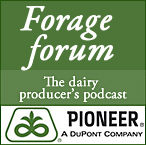 Congressman Bill Owens from New York State has announced his appointment to the House Committee on Agriculture.
Congressman Bill Owens from New York State has announced his appointment to the House Committee on Agriculture.
He will join colleagues on the panel that has general jurisdiction over federal agriculture policy and oversight of various federal agencies.
“Upstate N.Y. agriculture is a major driver of our entire state’s economy, and now our region has a larger role in the decision making process,” Owens said. “As we continue to work our way out of the recession, we need to provide every opportunity to our farming community and small business owners to succeed.”
In his first few months in office, Owens has fought tirelessly for local agriculture interests. In January, he pressed U.S. Trade Representative Ron Kirk to protect Upstate dairy from the negative effects a U.S.-New Zealand trade agreement would have on the industry. Owens also fought to keep the Market Access Program (MAP) funded at its highest level to help local dairy farmers and wine producers continue to play a large role in local economic development.
Owens is currently working with Secretary of Agriculture Tom Vilsack’s office to address the financial challenges that many farms face as a result of the recession by ensuring access to credit through the USDA Farm Service Agency’s loan guarantees and direct loans.
“As the largest segment of agriculture in New York, dairy is critical to the Upstate economy, with approximately 6,800 farms across the state. Nationwide, New York ranks third in milk production. These dairy farms are essential to their local economies and share a commitment to producing safe, nutritious and affordable products,” said Owens.
Last Month, Owens reintroduced a previous effort by former Congressman John McHugh to allow Upstate New York maple syrup producers greater access to federal resources for maple research, education, and promotion.
“The more opportunity we provide for our local agriculture leaders and small business owners, the better chance our community has at a complete economic recovery,” said Owens. “We have an abundance of untapped maple trees and providing resources for our maple producers to expand their operations will benefit our entire area.”
Source: Congressman Bill Owens
 Cooperatives Working Together (CWT) accepted three bids from Darigold, two bids each from Dairy Farmers of America and Foremost Farms, and one bid from Land O’Lakes for export assistance for a total of 1,409 metric tons (3.1 million pounds) of Cheddar cheese to the Middle East and Asia. The product will be delivered May through November 2010.
Cooperatives Working Together (CWT) accepted three bids from Darigold, two bids each from Dairy Farmers of America and Foremost Farms, and one bid from Land O’Lakes for export assistance for a total of 1,409 metric tons (3.1 million pounds) of Cheddar cheese to the Middle East and Asia. The product will be delivered May through November 2010.






 In this edition of Forage Forum,
In this edition of Forage Forum,  As reports of internal parasite resistance to deworming treatments are on the upswing,
As reports of internal parasite resistance to deworming treatments are on the upswing,